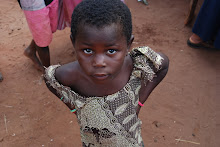Timberland
I thought that Timberland would have bad practices, but it sounds like, from this press release that they are going to be a leader in how the clothing/shoe industry should behave, telling consumers the environmental impact of what they buy.
TIMBERLAND ANNOUNCES INDUSTRY-LEADING PACKAGING INITIATIVE THAT PROVIDES NEW LEVELS OF TRANSPARENCY FOR CONSUMERS
01/26/06STRATHAM, NH, January 26, 2006 – The Timberland Company today announced a footwear packaging initiative that reduces Timberland’s environmental impact and provides consumers with new information to help guide them in the purchase process. The initiative, the first of its kind in the retail industry, will be seen in stores in 2006. Most notably, Timberland will place a “nutritional label” on each box that will educate consumers about the product they are purchasing, including where it was manufactured, how it was produced, and its effect on the environment.Highlights of the packaging initiative include:• The “nutritional label” that will inform consumers about Timberland’s environmental and community impact.• Footwear boxes made of 100 percent recycled post-consumer waste fiber.• Footwear boxes using no chemical glues and only soy-based inks to print labels.• Messaging inside the box that asks consumers “what kind of footprint will you leave” and provides a call to action for them after purchase.“As a company, Timberland wants to make it better and the new packaging will do just that,” said Jeffrey Swartz, Timberland’s President and Chief Executive Officer. “Our goal is to reduce our impact on the environment while engaging consumers to take action. This packaging and labeling initiative should make our industry more transparent and give consumers the information they need to make smart buying decisions.”The “nutritional label” has three sections: The “Manufactured” section gives the name and location of the factory where the product was made. The “Environmental Impact” section reports how much energy is needed to produce Timberland® footwear and how much of Timberland’s energy is generated from renewable resources such as the sun, wind or water. The “Community Impact” section details what percentage of factories are assessed by the company against Code of Conduct standards, the percentage of the workforce that are children and the total number of hours volunteered in the community by Timberland employees. In addition to increasing transparency with this initiative, Timberland is encouraging consumers to take action within their community. Examples of this call to action include: • Each Outdoor Performance shoe comes in a reusable “take-in, take-out” bio-degradable waste bag to be used on the trail. Children’s footwear includes tissue wrap that educates them about birds and animals in the woods. • Consumers can reuse and fill footwear boxes with donations, such as canned goods, first aid items or clothing, and send them to non-profit organizations as items are needed. Links on timberland.com will help consumers find local or national groups and then print shipping labels. “Every day, we challenge ourselves to think of ways to improve our products, the way we manufacture them and how we can become better members of our community,” said Swartz. “I believe this packaging and labeling initiative is another step in an industry-wide movement towards becoming more aware of what goes into the products we consume.” Timberland (NYSE: TBL) is a global leader in the design, engineering and marketing of premium-quality footwear, apparel and accessories for consumers who value the outdoors and their time in it. Timberland® products are sold worldwide through leading department and specialty stores as well as Timberland® retail stores. Timberland’s dedication to making quality products is matched by the company’s commitment to “doing well and doing good" -- forging powerful partnerships among employees, consumers and service partners to transform the communities in which they live and work.


0 Comments:
Post a Comment
<< Home